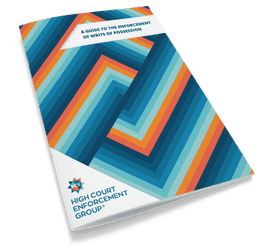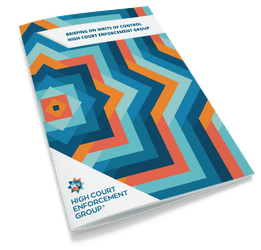Compliance stage - waiving the notice of enforcement

The compliance stage was introduced in April 2014 when Part 3 and Schedule 12 of the Tribunals Courts and Enforcement Act 2007 and the Taking Control of Goods Regulations 2013 came into force.
They brought in four enforcement stages for High Court Enforcement Officers (HCEOs):
- Compliance stage
- Enforcement stage 1
- Enforcement stage 2
- Sale or disposal stage
This article will focus on the compliance stage which covers the sending of the notice of enforcement to the judgment debtor.
Compliance stage
The stage starts once the High Court writ of control has been lodged and involves sending the notice of enforcement (NoE) to the debtor, giving them seven clear days’ notice in which to pay in full to prevent further enforcement. This will entail paying the judgment debt, judgment interest, court fees and the compliance fee.
The notice period does not include the day of despatch, Sundays or bank holidays and allows two days for service which in effect means that the HCEO will allow 10 to 12 days from the date of sending.
The purpose behind the NoE is to encourage debtors to pay so that they can avoid further enforcement costs.
If the debtor wishes to make a payment arrangement, this will be done by progressing the case to enforcement stage 1, where an enforcement agent (EA) will attend the debtor’s premises and take control of sufficient goods to cover the amount owed; these will normally be left in situ under a controlled goods agreement, which secures (binds) the goods into the control of the HCEO until the debt is fully cleared.
Impact of the compliance stage and notice of enforcement
We have seen a number of judgment debtors paying their judgment in full after receiving the NoE. Indications coming up to the end of three years of the new regulations are that the numbers paying are equal, if not higher, than those anticipated by the Ministry of Justice when drafting the legislation.
One impact of the NoE is that it gives those debtors who have no intention of paying the debt the time to hide or dispose of assets, even though the writ of control prohibits them from doing so once it is issued. In practice, though, this is pretty much impossible to prove.
Waiving the notice of enforcement
However, if the creditor, their solicitor or the HCEO has good reason to believe that the goods are in jeopardy, they can apply to court for permission to waive or significantly shorten the NoE period. This is most commonly done at the point of applying for the writ, but can be done after it has been issued.
This happens more commonly with high value goods, especially those that easily moved, where there is a credible risk that they may be taken out of the country. If enforcement was to be against an aircraft, for instance, the NoE would simply ensure that it wasn't brought into the UK.
Compliance stage fees
As mentioned above, the compliance stage fee is recoverable from the debtor, along with further enforcement stage fees if the matter has gone beyond the compliance stage.
If enforcement is unsuccessful, the judgment creditor will be liable to pay the compliance stage fee. Normally they will not be liable for any other enforcement fees, which is why HCEOs tend to have better results.



